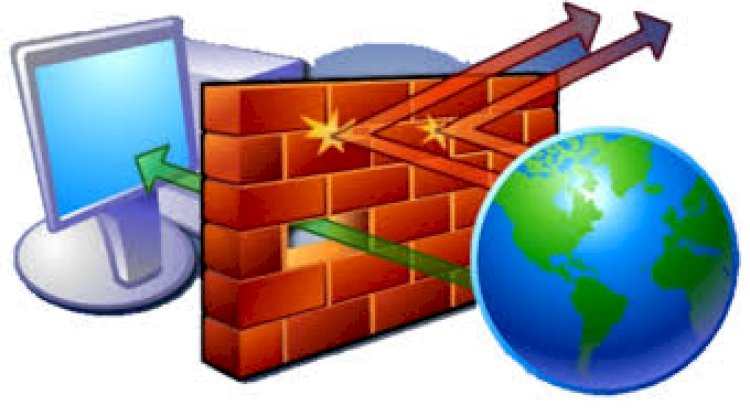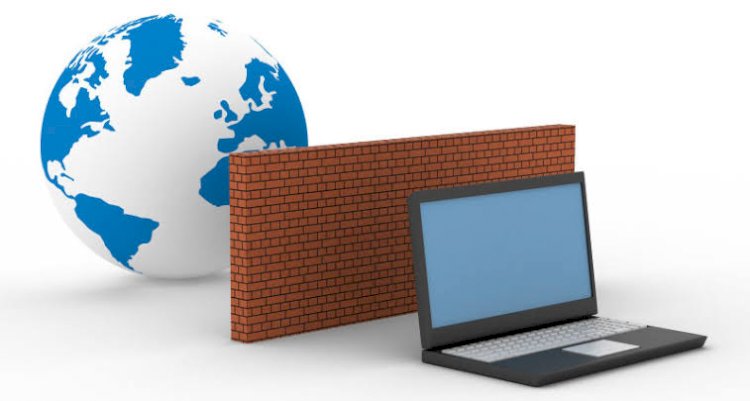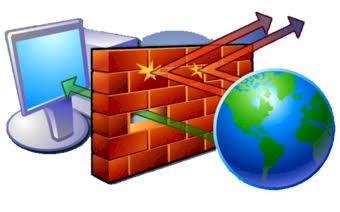Are you safe? Confirm It By Using Firewall Security Measures
A firewall is a kind of cybersecurity device this is used to filter site visitors on a network. Firewalls may be used to split network nodes from outside site visitors sources, inner site visitors sources, or maybe unique applications. Firewalls may be a software program, hardware, or cloud-primarily based totally, with every kind of firewall having its very own unique pros and cons.
By Sayantan Giri
What do you mean by firewalls?
A firewall is a kind of cybersecurity device this is used to filter site visitors on a network. Firewalls may be used to split network nodes from outside site visitors sources, inner site visitors sources, or maybe unique applications. Firewalls may be a software program, hardware, or cloud-primarily based totally, with every kind of firewall having its very own unique pros and cons.
The number one purpose of a firewall is to block malicious site visitor's requests and data packets even as permitting valid site visitors via.
Types of Firewalls
Firewall types may be divided into numerous distinct categories primarily based totally on their well-known shape and method of operation. Here are 8 types of firewalls:
- Packet-filtering firewalls
- Circuit-stage gateways
- Stateful inspection firewalls
- Application-level gateways (a.k.a. proxy firewalls)
- Next-gen firewalls
- Software firewalls
- Hardware firewalls
- Cloud firewalls.
Packet-Filtering Firewalls

As the maximum “fundamental” and oldest form of firewall structure, packet-filtering firewalls essentially create a checkpoint at a site visitors router or switch. The firewall plays an easy test of the data packets coming via the router—examining records along with the vacation spot and origination IP address, packet kind, port number, and different surface-degree data without starting up the packet to look at its contents.
If the data packet doesn’t pass the inspection, it is dropped.
The excellent aspect of approximately those firewalls is they aren’t very resource-intensive. This manner they don’t have a large effect on device overall performance and are distinctly easy. However, they’re additionally extraordinarily easy to bypass in comparison to firewalls with extra strong inspection abilities.
Circuit-Level Gateways

As some other simplistic firewall kind that is supposed to speedy and without problems approve or deny site visitors without eating significant computing resources, circuit-level gateways paintings with the aid of using verifying the transmission control protocol (TCP) handshake. This TCP handshake check is designed to make sure that the session the packet is from is valid.
While extraordinarily resource-efficient, those firewalls do now no longer test the packet itself. So, if a packet held malware, however, had the proper TCP handshake, it might pass properly through. This is why circuit-level gateways are not sufficient to guard your business with the aid of using themselves.
Stateful Inspection Firewalls
These firewalls integrate each packet inspection technology and TCP handshake verification to create a level of safety extra than both of the preceding architectures may want to offer alone.
However, these firewalls do position extra of a strain on computing assets as well. This can also additionally slow down the switch of valid packets as compared to alternative solutions.
Proxy Firewalls (Application-Level Gateways/Cloud Firewalls)
Proxy firewalls function on the application layer to filter incoming site visitors between your community and the site visitor's supply—hence, the name “utility-degree gateway.” These firewalls are introduced through a cloud-based answer or some other proxy tool. Rather than letting site visitors connect directly, the proxy firewall first establishes a connection to the supply of the site visitors and inspects the incoming data packet.
This test is much like the stateful inspection firewall in that it seems at each the packet and on the TCP handshake protocol. However, proxy firewalls may additionally carry out deep-layer packet inspections, checking the real contents of the records packet to confirm that it includes no malware.
Once the test is complete, and the packet is approved to connect with the destination, the proxy sends it off. This creates a further layer of separation among the “client” (the device wherein the packet originated) and the individual gadgets for your network—obscuring them to create extra anonymity and safety to your network.
If there’s one disadvantage to proxy firewalls, it’s that they can create substantial slowdown due to the greater steps in the facts packet transferal process.
Next-Generation Firewalls

Many of the maximum recently-launched firewall products are being touted as “next-generation” architectures. However, there is not a whole lot consensus on what makes a firewall surely next-gen.
Some common functions of next-generation firewall architectures consist of deep-packet inspection (checking the real contents of the facts packet), TCP handshake checks, and surface-degree packet inspection. Next-generation firewalls can also additionally consist of different techniques as well, along with intrusion prevention systems (IPSs) that work to automatically stop attacks towards your community.
The difficulty is that there is no one definition of a next-generation firewall, so it’s crucial to confirm what unique skills such firewalls have earlier than investing in one.
For full detail stay tuned with us
What's Your Reaction?























